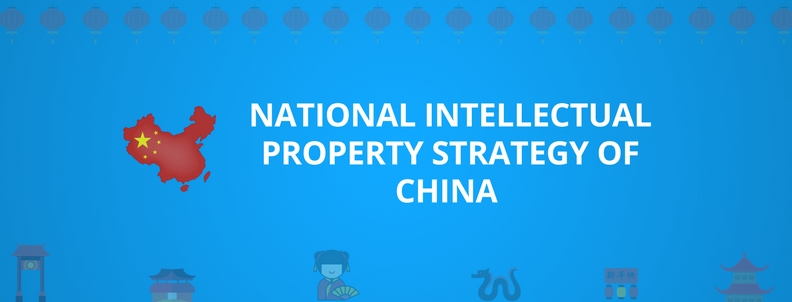IP House, a research group of 30 IP professional set up in 2014, analyzed 5022 out of 5432 cases handled by the Beijing IP Court, one of the three specialized IP court of China. Out of these 5022, 1095 cases were by foreign litigants.
This makes 20% of the total cases litigated in the Beijing IP Court. Out of these 1095, US companies litigated 395 cases. After the USA, German companies were involved in 158 cases.
The growing number of applications from the US also shows that China is more attractive to that country and its businesses need development in China,
Chen Jinchuan, vice-president of the Beijing IP Court
These stats clearly point that Chinese Patent Reform started in 2008 have started bringing fruits for the country. China, with a great pace, is accelerated toward becoming a global IP leader.
A large consumer market and a manufacturing hub in conjunction with strong IPRs are all set to turn China into a next innovation hub. Now you cannot use anyone else technology if they can come after you. When you cannot imitate, you innovate, thus more and more companies are considering its IP strategy in China seriously.
At present, due to a number of decisions, for example, the Alice vs CLS Bank, a lot of uncertainty looms in the US patent system. This led to growing skepticism among companies and citizens alike for the deterioration of power of the patent rights in the US. Many patent experts have expressed their opinion on this.
How this started and where this is going, today in this article we will be discussing all of the things. Once you finish the article, you will know:
Table of Content
- Why did China feel a Need of Strong IPR?
- What Reforms did China bring in its Intellectual Property Rights?
- How is Chinese IP System different than the rest of the world?
- The reason it’s beating the US and Europe?
- Where Chinese patent system still lacks
Why did China feel a Need of Strong IPR?
Not so long ago, China, one part due to international pressure but majorly due to a realization that to sustain its economic growth, amidst shrinking working-age population and cheap labor, it has to shift from an economy dependent on manufacturing and reverse engineering to an economy led by sustainable innovation.
The glorious dream of sustainable innovation was not possible without attracting new foreign technology and knowledge into the country for which strong IPRs were vital. Hence in 2008, China introduced a National Intellectual Property Strategy.
The para (4) of the preface of Outline of National Intellectual Property Strategy captures the essence of the strategy beautifully and also sums up the grand motives of People Republic of China:
Implementing the national intellectual property strategy to greatly promote China’s capacity in creation, utilization, protection, and administration of intellectual property will help improve China’s capacity for independent innovation and aid in efforts to make China an innovative country. It will also be conducive to improving China’s socialist market economy, standardizing market order and encourage the society to be more creditworthy. It will also increase the market competitiveness of Chinese enterprises and strengthen the core competitiveness of the country. Finally, it will facilitate China’s opening up further to the outside world, thereby leading to a win-win situation between China and the rest of the world. We must implement this intellectual property strategy an important national strategy and we must step up efforts in the area of intellectual property.
Figures released earlier this year show that there were more patents filed in China in 2014 than in any other country in the world. Of these, around one-third was filed by foreign (non-Chinese) applicants and the remaining two-thirds by Chinese applicants.
What Reforms did China bring in its Intellectual Property Rights?
The centralized jurisdiction that the Supreme Court of PRC, came into force on Nov 3, 2014, after promulgated a provision to establish specialized IP courts in Beijing, Shanghai, and Guangzhou to try patent litigation was the top most important reform that China brought under its IPR reform.
The provision has 8 articles which give IP courts of Beijing, Shanghai, and Guangzhou an exclusive, appellate and a cross-regional jurisdiction among other. You can read a summary of 8 articles of the provision here.
The establishment of specialized IP Courts in late 2014 in Beijing, Shanghai, and Guangzhou is a milestone of China’s recent efforts in improving the IP protection.
Hui Zhang, Partner, Attorney at Law, at ZY Partners
In early this year, four new specialized IP tribunals were established to try cases involving patents, trademark, and antitrust disputes. Hui Zhang of ZY Partners has performed a detailed analysis on the performance of three courts which is published on Wolter Kluwer’s blog. You on read it here: Hui’s take on Chinese IP Courts
Increasing Transparency
One reason the world was frustrated with Chinese Court system was that of its inadequate transparency. For this reason, high attention was given to judicial transparency which is a vital part of judicial reforms and the Supreme People’s Court announced increasing judicial transparency through a whitepaper.
“Justice Must Not only be Done but Must be Seen to be Done!”
Following are some of the key transparency measure introduced by the whitepaper
- Establishment of an electronic trial process disclosure platform for litigants and counsels
- Publicly available video recording of trial proceedings to let everyone know how interactions happen in a court
- Availing a database having court case data which will force judges to write better judgment as everyone can scrutinize it to find if it makes sense or not.
- Making it easy to attend a trial.
The general level of professionalism of judges is way up from 20 years ago. There is a much higher percentage of judges who are legally trained, for example. There is also a big push within the judiciary to do more in-service training. Transparency reform also pushed some judges to be better.
~Susan Finder
Increased Fairness and the speed of resolving patent disputes
The recent cases of Qualcomm filing 17 complaints against Chinese smartphone maker Meizu and Wireless Future Technologies Inc., a Canadian company, bringing patent infringement lawsuit against Sony in Nanjing showcase increase in the confidence of foreign companies in the Chinese patent system.
Advancement is in the speed with which specialized Chinese Patent Courts are giving verdict on patent disputes is another factor which is attracting foreign patent owners to China for resolving patent infringement disputes.
The IP Court at Beijing returns, on average, a verdict on a patent lawsuit within 125 days while in Europe it takes 18 months on average and in the US it goes up to 2.4 years.
How is Chinese IP System different than the rest of the world?
The Chinese IP Laws, which got promulgated on 12 March 1984, are driven from the German Patent System. Chinese utility model system, determination of infringement, for example, are some of the aspects where one can see German influence on Chinese patent system.
However, with passage of time– every eight years to be precise– Chinese keep amending their IP laws as per their changing market which led to it having its own unique characteristics. Below is a brief account of how it differs from major intellectual property offices:
Chinese Patent System vs. German IP System
Tian Lipu, former commissioner of SIPO, during 1998 was a visiting scholar at Max Planck Institute where he conducted research on EPO, German Patent Office, and German Patent Court. When he took over the office as Commissioner, he implemented his learning while shaping the National IP Policy of China.
The Chinese IP System differs from German because with time Germans introduced a lot of changes in their patent system due to an influence of other countries like the US but Chinese were reluctant to do so.
Chinese vs. US IP System
If you file a provisional patent in the US, you have to convert it into a US utility patent within a year to enjoy priority date of the provisional patent application. On the other hand, Chinese utility model patent is deemed granted and one can enforce it after requesting an ERP (Evaluation Report of a Patent).
One remarkable difference is regarding the priority date. If a later filed Chinese utility model patent claims priority of an earlier patent, the utility model patent should be withdrawn as per the Chinese patent laws.
There also is a significant difference between two countries in terms of what is patent eligible. Many subject matters that are patentable under USC 35 101 are patent ineligible under article 25 of CPL. Further, in China, though applicants are instructed to submit prior art known to them; there, however, is no punishment assigned in case they conceal a prior art which is quite opposite to the USPTO where applicants are bound to submit prior art. A deliberate concealment of prior art could lead to the charge of inequitable conduct and can even lead to barring a patent attorney from practicing before the USPTO.
Unlike in the US, where society, at present, associates negative connotations with patent, in China people are more supportive of patent and IP rights. General masses in China are in favor of a system where IP laws play a major role in the protection of innovative efforts.
Unlike the US, there are far less foreign plaintiffs in China. Chinese are major prosecutors and litigators, unlike the US where foreign entities play a significant role in exercising both the prosecution and litigation IP rights.
Another difference among many lies in the way patent litigation get carried out in both countries. The US courts permit adjudication of both invalidity and infringement in a single judicial setting. In China, however, invalidity is decided by the SIPO and infringement by a court.
Some Other noticeable differences
In EU, designs can be protected for three years without registration whereas, in China, designs must be registered and renewed each year.
Article 20 of the Chinese Patent Law directs an applicant whose invention is originating from China, to lodge a request in advance for confidentiality examination. If such an applicant files his patent application abroad while ignoring the confidentiality examination clause, then patent rights won’t be granted to him in China.
During litigation, as per the Article 11 of the Supreme Court Evidence Rule states that if evidence are obtained from a foreign country that source should be mentioned and it must be certified by the notary of that country and then legalized by the Chinese rules. Only then they could be admissible.
Also recently IAM reported Chinese courts considering technical issues above business models while deciding litigation. This, as per Jacob of IAM, could lead to adverse effect later.
The reason it’s beating the US and Europe?
The inauguration of China as a venue for foreign patent litigation has done by a Canadian company WiLan by filing a patent infringement suit against Sony in Nanjing –a state that has a historical connection with Japanese.
Not only this, foreign companies are bringing Chinese companies in court and an example is Qualcomm’s lawsuit against Meizu. Further, Chinese companies are also enforcing their patent rights in their homeland– Huawei vs. Samsung.
This is happening because while in the US, enforcing patent rights diminished during the past decade where getting an injunction has become next to impossible after eBay, in the Europe, though getting an injunction granted and trail pace is fast in the German but it has a smaller market as compared to the US as well as China.
Added to that is the higher cost of litigation in both US and Europe as compared to China. Patent holders have come to a realization that if they head over to China not only it going to be cost-effective and too fast – on average a 130 day turnaround time as compared to 2 years in the US – they are going to have high chances of getting an injunction granted – granted over 99% of the time to winning parties – is also there.
And last but not the least, patent litigation win rates in China, at present, hovers around 80% where foreign patent holders have fared better than Chinese plaintiffs.
Where Chinese patent system still lacks
The US Trade Representative’s 2016 Report to Congress on China’s WTO Compliance summarizes shortcomings in Chinese IP System. The report highlights weaknesses in protection and enforcement of IPR especially in the area of trade secrets. One has to go through uncertain and complex environment during IPR enforcement. Plus, there is a pressure on rights holder to transfer rights to Chinese enterprises via a number of govt. policies and practices.
Reforms are needed in key areas, such as updating China’s laws and regulations in the area of trade secrets, providing regulatory data protection for pharmaceutical products in a manner consistent with international research and development practices and legal standards, further improvement of China’s measures for copyright protection on the Internet following China’s accession to the WIPO Internet treaties, addressing deficiencies in China’s criminal IPR enforcement measures and revising measures conditioning government procurement, financial benefits and preferences on intellectual property developed by, owned by or licensed to a Chinese party.
Jump to page 126 to IPR issues mentioned in the report.
Another issue is regarding the way Chinese courts ignore the business model and focus on the subject matter of a patent. This could lead to increased activities of NPEs in the region. These NPEs are not looking for hefty damages but are more interested in getting an injunction as it gives NPEs strong bargaining power.
WiLan vs Sony is one such ongoing case where everyone is keeping an eye on how the case unfolds. The outcome of this case has potential to affect the NPE activity in the geography.
Authored By: Nitin Balodi, Team Lead, Market Research










